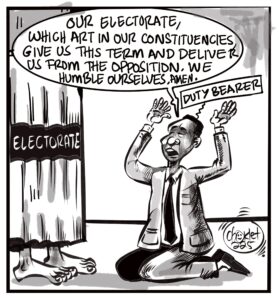For more than a hundred years, mining, especially copper mining, has been a cornerstone of Zambia’s economy. The sector accounts for more than 70 percent of the nation’s export earnings and approximately 17.5 percent of its Gross Domestic Product, as reported by the Ministry of Finance and National Planning. Despite the economic benefits, the impact of mining on the environment and local communities, especially within protected areas, remains a pressing concern that demand immediate attention. This week’s piece delves into the challenges and potential impact of the rising demand for critical minerals on Zambia’s protected areas such as forest reserves and game management areas.
The shift toward a more sustainable and greener global economy has led to increased demand for minerals essential for clean energy technologies, such as those used in electric vehicles, renewable energy systems, and energy storage solutions. The International Energy Agency projects that the global demand for these critical minerals could double or quadruple by 2040. Zambia, with deposit of critical minerals like lithium, manganese, and nickel, among several others, is poised for an expansion of mining activities to take advantage of this surging demand.
The recent investment commitments and actual investments in Zambia’s mining sector shows a growing interest in the country’s mineral resources. Notable examples include Vedanta’s commitment to invest USD 1 billion in Konkola Copper Mines over the next five years and the United Arab Emirates’ International Resources Holdings (IRH) investment of USD 1.1 billion in Mopani Copper Mines for a 51 percent ownership stake, coupled with several other investment announcements. Alongside these large-scale investments, the activities of artisanal and small-scale miners are also increasing. However, with this expansion, there is a need for careful management, especially as mining operations could potentially impact protected areas such game parks, game and forest reserves, water catchment as well as other biodiversity sensitive areas.
Forests, in particular, play a crucial role in sustaining the equilibrium of our planet’s ecosystem. They serve as biodiversity hotspots, supporting a diverse range of plants and animals, while also contributing to the global carbon cycle and providing livelihoods for many communities. For rural households, forests offer a source of income through the collection and sale of wild fruits and mushrooms. They also contribute to water retention and soil stabilization, crucial for preventing floods and erosion.
However, Zambia’s invaluable ecosystems, like those of many other underdeveloped countries, are under threat from economic activities such as destructive mining and agriculture practices. Large Scale Land-Based Investments (LSLBIs) such as mining and agricultural activities that require huge amount of land are contributing to forest degradation: a precursor to climate change. According to Global Forest Watch, Zambia in 2022 lost an average of 179 hectares of tree cover, which is equivalent to 69.8 Metric tons of carbon dioxide emissions. This not only results in the loss of biodiversity and disrupting the carbon cycle but also huge economic costs resulting from climate change and its aberrations. This indicates the urgent need for decision-makers to rethink the mining sector by ensuring mining practices are sustainable and inclusive in the long term.
Compounding these challenges is the apparent lack of coordination among relevant authorities to safeguard Zambia’s conservation areas from mining activities. For example, there have been reports where mining licenses were issued within biodiversity-sensitive areas, including cases in North Swaka National Forest Reserves in Mkushi and the controversial decision to permit mining in the Lower Zambezi National Park. Although the decision regarding the Lower Zambezi National Park was eventually overturned by the Zambia Environmental Management Agency, these cases show the tensions between conservation efforts and mining interests and demonstrate the urgent need for coordinated efforts to protect Zambia’s sensitive areas from mining activities.
Join me next week as I explore key recommendations and strategies to ensure Zambia’s efforts to capitalize on critical minerals amid the energy transition do not compromise its environmental integrity and social responsibilities.
About the Author
Isaac Mwaipopo Heads the Centre for Trade Policy and Development in Zambia, providing guidance on trade policies, public finance, extractives, climate action and legislative reviews. His extensive experience ensures the organization remains a key resource for developments in these areas.
























